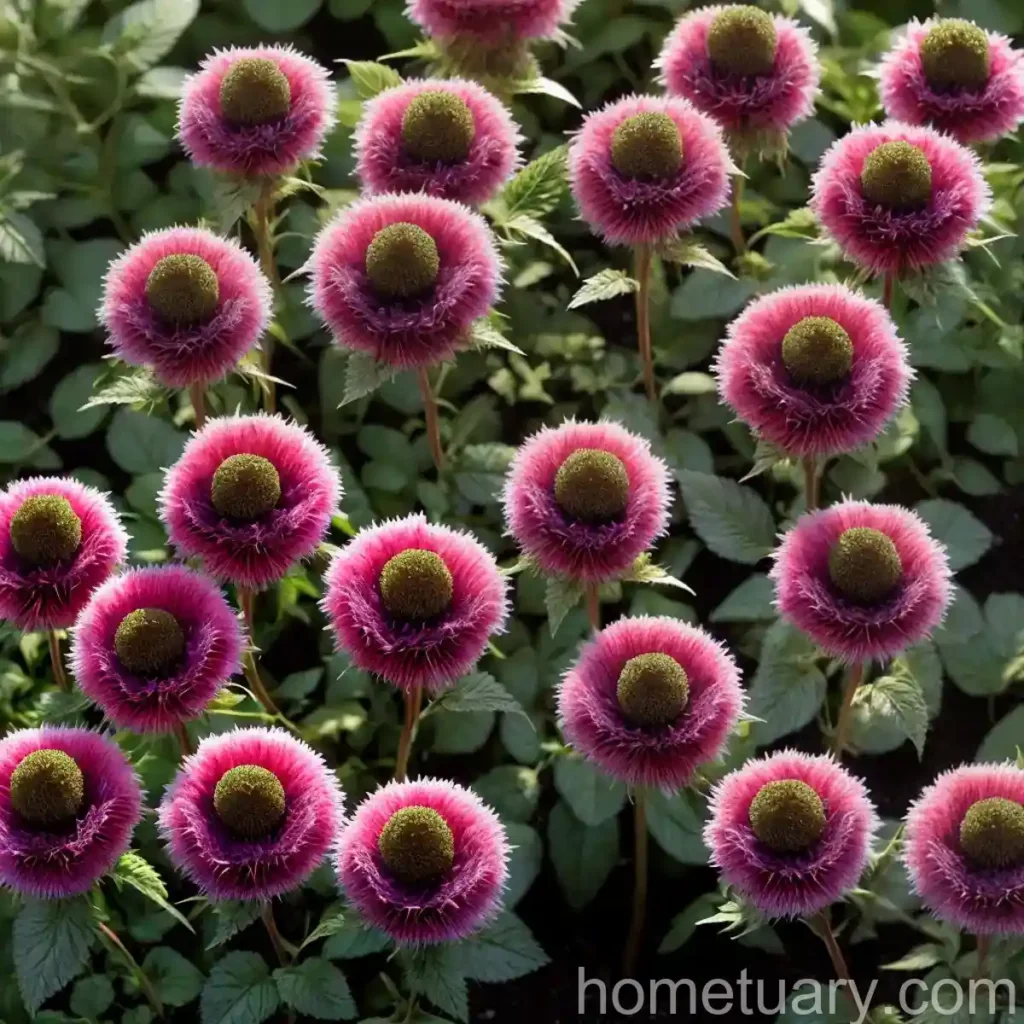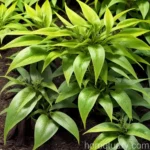Globe Amaranth (Gomphrena globosa ‘Buddy Rose’): A Versatile and Vibrant Plant
Plants are not just vital for our planet, but they also add grace and beauty to our surroundings. Among the multitude of plant species, globe amaranth stands out for its resilience, aesthetic appeal, and wide range of uses. In this comprehensive guide, we will delve into the world of Gomphrena globosa ‘Buddy Rose’ and explore its culture, uses, care requirements, and fascinating facts.
What is Globe Amaranth (Gomphrena globosa ‘Buddy Rose’)?
Gomphrena globosa, commonly known as globe amaranth, is a species of flowering plant native to Brazil, Panama, and Guatemala. The ‘Buddy Rose’ variety is specifically prized for its vibrant and unique flower heads, making it a popular choice for gardens, landscapes, and floral arrangements.
The rounded flower heads of the ‘Buddy Rose’ variety are characterized by dense clusters of small, clover-like flowers that emerge in striking shades of pink, giving them the appearance of miniature, long-lasting blossoms. This perennial plant belongs to the Amaranthaceae family and is known for its hardiness, versatility, and prolonged flowering season. Being a low-maintenance plant, it is favored by both seasoned and novice gardeners for its ability to thrive in various conditions.
Key Takeaways – Globe Amaranth (Gomphrena globosa ‘Buddy Rose’):
Before we dive into the specifics of cultivating and caring for Gomphrena globosa ‘Buddy Rose’, let’s outline the key takeaways about this fascinating plant:
- Gomphrena globosa ‘Buddy Rose’ is a variety of globe amaranth known for its vibrant pink flower heads and long-lasting blooms.
- It is a resilient and low-maintenance perennial plant, making it an excellent choice for both novice and experienced gardeners.
- The plant is versatile and has a wide range of uses, from landscaping and garden borders to cut flower arrangements and dried crafts.
Now, let’s explore the various aspects of cultivating and caring for this beautiful plant, including its cultural requirements, uses, and essential care guidelines.
Culture:
Water
Globe amaranth plants thrive in well-drained soil and only require regular watering during dry spells. Overwatering can lead to root rot, so it’s important to allow the soil to dry partially between watering sessions. Once the top inch of the soil feels dry, it’s a good indication to provide additional water. It’s advisable to water at the base of the plant to prevent water from splashing onto the foliage, which can invite diseases and affect the plant’s overall health.
Sunlight
These plants thrive in full sun, although they can tolerate partial shade. However, to ensure robust growth and prolific flowering, it’s best to provide them with at least 6-8 hours of direct sunlight daily. In regions with intense heat, some afternoon shade can help prevent the plants from becoming stressed.
Fertilizer
When it comes to fertilizing globe amaranth, a balanced, all-purpose fertilizer can be applied during the growing season to promote healthy growth and flowering. Follow the manufacturer’s instructions for dilution and frequency, and avoid over-fertilizing, as it can lead to excessive foliage growth at the expense of flowers.
Soil
Globe amaranth plants prefer well-draining, moderately fertile soil. They can adapt to various soil types, but they thrive in loamy, sandy, or clay soils with good drainage. If the soil is heavy or clay-based, amending it with organic matter such as compost can improve its structure and drainage.
Pruning
Minimal pruning is required for globe amaranth. Deadheading spent blooms can encourage continuous flowering and maintain a tidy appearance. Additionally, removing any yellowing or damaged foliage can enhance the plant’s overall aesthetics and health.
Uses:
Gomphrena globosa ‘Buddy Rose’ offers a wide array of uses, both in outdoor and indoor settings. Here are some common applications of this versatile plant:
-
Landscaping: The vibrant and long-lasting blooms of Gomphrena globosa ‘Buddy Rose’ make it an excellent choice for landscaping, adding color and visual interest to borders, flower beds, and mixed perennial plantings.
-
Cut Flower Arrangements: The enduring blooms of globe amaranth make them a popular choice for cut flower arrangements. Their unique, papery texture and vibrant colors add a whimsical touch to bouquets and floral displays.
-
Dried Crafts: When dried, the flowers of Gomphrena globosa ‘Buddy Rose’ retain their shape and color, making them perfect for dried crafts such as wreaths, potpourri, and dried flower arrangements.
-
Container Gardening: Globe amaranth can thrive in containers, making them a versatile choice for small gardens, balconies, and patios.
-
Medicinal Uses: Gomphrena globosa has been traditionally used in herbal medicine for various purposes, including treating skin conditions and digestive issues. While scientific research on its medicinal properties is limited, it adds to the plant’s overall charm and versatility.
Propagation:
Seed Propagation
Propagating Gomphrena globosa ‘Buddy Rose’ from seeds is a straightforward and rewarding process. Here’s a step-by-step guide to propagating these delightful plants from seeds:
-
Seed Collection: Allow a few flower heads to remain on the plant until the petals have dried and the seeds have matured. Once the seeds have turned dark, carefully collect them from the flower heads.
-
Seed Starting Mix: Fill seed trays or containers with a well-draining seed starting mix. Moisten the mix before sowing the seeds.
-
Sowing Seeds: Gently press the seeds onto the surface of the damp soil, and then lightly cover them with a thin layer of the seed starting mix.
-
Moisture and Warmth: Keep the soil consistently moist but not waterlogged. Place the seed trays in a warm, well-lit area, such as a greenhouse or sunny windowsill.
-
Germination: With the right conditions, the seeds should germinate within 7-21 days. Once the seedlings have developed a few sets of true leaves, they can be carefully transplanted into individual pots or directly into the garden.
Division
In addition to propagating globe amaranth from seeds, established plants can also be propagated through division. This method involves separating the plant into smaller sections, each with its own root system, and replanting them to establish new plants.
Container Popularity:
Gomphrena globosa ‘Buddy Rose’ is well-suited to container gardening, making it a popular choice for individuals with limited space or those looking to add vibrant accents to their patios, balconies, or outdoor living areas. When grown in containers, the plant’s compact growth habit and prolonged flowering season make it an attractive addition to any outdoor space. Here are some key points to consider when growing globe amaranth in containers:
-
Choose containers with adequate drainage holes to ensure proper water drainage and prevent waterlogged soil.
-
Use a well-draining potting mix that provides good aeration and moisture retention.
-
Position the containers in an area that receives at least 6 hours of direct sunlight per day, such as a sunny patio or balcony.
-
Regularly monitor the moisture levels of the potting mix and water the plants when the top inch of the soil feels dry to the touch.
-
Fertilize the plants periodically with a balanced, water-soluble fertilizer to support healthy growth and abundant flowering.
Common Diseases and Disease Diagnosis:
While Gomphrena globosa ‘Buddy Rose’ is known for its resilience, it can be susceptible to certain diseases and issues that may affect its overall health and appearance. Some common diseases and issues to watch for include:
Powdery Mildew
Powdery mildew is a fungal disease that can affect globe amaranth plants, especially in humid or poorly ventilated conditions. It appears as a powdery, white substance on the leaves and can lead to stunted growth and reduced flowering.
Botrytis Blight
Also known as gray mold, botrytis blight is a fungal disease that causes brown, water-soaked lesions on the leaves and flowers of affected plants. It can lead to wilting and decay of plant tissues.
Leaf Spot
Leaf spot diseases, caused by various fungi, can result in the development of dark, irregular spots on the foliage. As the disease progresses, the affected leaves may yellow, wither, and drop prematurely.
Diagnosis and Treatment
Early diagnosis of diseases is crucial for effective management. Regularly inspect the plants for any signs of disease, including unusual spots, discoloration, or unusual growth patterns. If any issues are detected, prompt action can help prevent the spread of diseases and restore the plant’s health.
When diagnosing diseases, it’s important to consider factors such as environmental conditions, watering practices, and overall plant care. Proper airflow, adequate spacing between plants, and avoiding overhead watering can help reduce the risk of fungal diseases.
Common Pests:
In addition to diseases, globe amaranth plants can also attract certain pests that may pose a threat to their health. Some common pests to be mindful of include:
Aphids
Aphids are small, soft-bodied insects that feed on plant sap, causing distorted growth, yellowing leaves, and overall weakening of the plants.
Spider Mites
Spider mites are tiny arachnids that can infest the undersides of leaves, where they feed on plant fluids, leading to stippling, discoloration, and reduced plant vigor.
Whiteflies
Whiteflies are small, winged insects that congregate on the undersides of leaves and can cause yellowing, wilting, and the development of sticky honeydew on the foliage.
Pest Management
Regular monitoring of the plants can help detect pest infestations early, allowing for prompt intervention. Insecticidal soaps, horticultural oils, and biological controls can be effective for managing pests while minimizing the impact on beneficial insects and the environment.
Botanist’s Tips:
As a plant scientist with an affinity for globe amaranth, I’d like to share some valuable tips for cultivating and caring for Gomphrena globosa ‘Buddy Rose’:
-
Mulching: Applying a layer of organic mulch around the base of the plants can help conserve moisture, suppress weed growth, and moderate soil temperatures.
-
Companion Planting: Pair globe amaranth with other sun-loving, drought-tolerant plants such as lavender, salvia, and sedum to create visually appealing and low-maintenance garden combinations.
-
Regular Deadheading: Removing spent blooms not only encourages continuous flowering but also prevents the plants from setting seed and potentially becoming invasive in the garden.
-
Natural Pest Control: Attract beneficial insects such as ladybugs, lacewings, and predatory wasps to help maintain a healthy balance and manage pest populations naturally.
By incorporating these tips into your globe amaranth care routine, you can foster healthy, vibrant plants that contribute to the visual allure of your garden or outdoor space.
Fun Facts:
In addition to its aesthetic appeal and versatile uses, globe amaranth is full of intriguing and captivating characteristics. Here are some fun facts about Gomphrena globosa ‘Buddy Rose’:
-
The long-lasting blooms of globe amaranth make them a symbol of immortality in some cultures, often used in rituals, ceremonies, and floral tributes.
-
Apart from its ornamental value, Gomphrena globosa has been traditionally prized for its medicinal properties and has been used in traditional herbal remedies for various purposes.
-
The vibrant colors of the flowers are not caused by petals, but rather by the bracts that surround the tiny, inconspicuous flowers, providing an enchanting and unique visual display.
These fun facts add depth to the appreciation of globe amaranth and underscore its historical, cultural, and horticultural significance.
External Resources:
To expand your knowledge and appreciation of Gomphrena globosa ‘Buddy Rose’ and its cultivation, here are some valuable external resources to explore:
-
Royal Horticultural Society – Globe Amaranth
https://www.rhs.org.uk/plants/105047/i-gomphrena-globosa-i-buddy-rose/details -
University of Florida IFAS Extension – Globe Amaranth Production Guide
https://edis.ifas.ufl.edu/pdffiles/EP/EP34600.pdf -
Missouri Botanical Garden – Gomphrena globosa
http://www.missouribotanicalgarden.org/PlantFinder/PlantFinderDetails.aspx?taxonid=284693 -
American Society for Horticultural Science – Globe Amaranth Cut Flower Production
https://journals.ashs.org/hortsci/abstract/journals/hortsci/33/1/article-p108.xml
These resources provide valuable insights, guidelines, and research findings related to globe amaranth, allowing enthusiasts and horticulturalists to deepen their understanding and expertise in cultivating this beloved plant.
In conclusion, Gomphrena globosa ‘Buddy Rose’ presents itself as an exceptional plant with an array of captivating traits, from its vibrant and enduring blooms to its adaptability and diverse uses. By embracing its cultural requirements, understanding its uses, and incorporating best practices for care and maintenance, gardeners and enthusiasts can nurture thriving Gomphrena globosa ‘Buddy Rose’ plants that enrich their outdoor spaces and bring joy through their enduring beauty.















